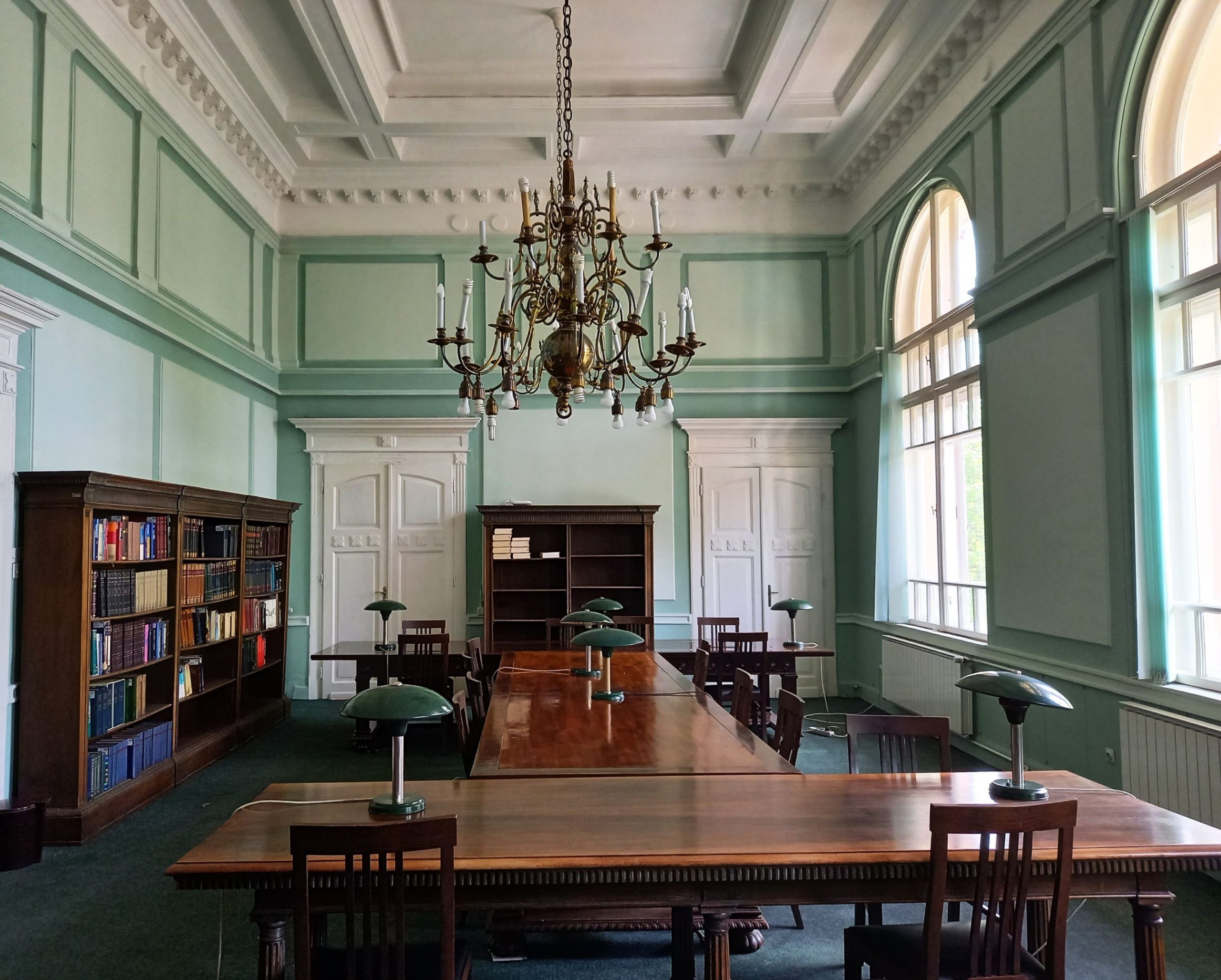WHERE IS IT?
The "University library Svetozar Marković" is located at 71 Bulevar kralja Aleksandra. It is near the building of the Faculty of Electrical Engineering. The separate department for folk literature of the University Library is situated in the Vojislav Jovanović Marambo House, at 24 Birčaninova Street.
THE HISTORY
The University Library "Svetozar Marković" originated from the Library of the Lyceum of the Principality of Serbia. The Lyceum was established in 1838 and had a library for its professors and students. When, in 1905, the Velika škola (Great School) transformed into a University, there was no longer adequate space for a large university collection. By the decision of the Faculty of Philosophy, the University Library was founded in January 1921.
Upon the initiative of the Kingdom of SHS (Kingdom of Serbs, Croats, and Slovenes) representatives in Washington, Dr. Slavko Grujić, the Carnegie Foundation, which had already built numerous libraries worldwide, decided to grant $100,000 for the construction and equipping of a library in Belgrade. It was agreed to construct a building to be used by the University as its library. The city of Belgrade had previously donated land, the former racetrack, where the university complex was planned, and it was decided to build the library there. The architects Dragutin Đorđević and Nikola Nestorović designed the project.
The construction began when, on June 23, 1921, Crown Prince Aleksandar Karađorđević placed a charter on parchment in the foundation of the building in the presence of city and state representatives. The building was opened for use in 1926.
During World War II, the library was not open to the public, and part of the building was occupied by the German army. In celebration of the centenary of Svetozar Marković's birth in 1946, the library received its current name: University Library "Svetozar Marković"
Considering that the library's collection quickly outgrew the space of the building, in 1975, it was decided to construct an underground storage facility on two levels.
Apart from the financial support from the city for the library's renovation, personal initiatives also contributed to the reconstruction of the space. Judge Dušan Korlat, a long-time user of the library, took personal initiative to convert a former storage space of 200 square meters into a reading room in 2005.
The last reconstruction was carried out with the funds from the company U.S. Steel Serbia, continuing the tradition of Carnegie's steel mills, in 2007.
The University Library houses over 30 special libraries (collections) that are preserved as separate entities.
A specially designated department for folk literature within the University Library is located in the Vojislav Jovanović Marambo House, at 24 Birčaninova Street. This building was originally built as a family house by Mata Jovanović in 1883. Vojislav Jovanović's sister bequeathed the house, along with books, manuscripts, and personal belongings, to the University Library. In this reading room, the former home of Vojislav Jovanović Marambo, publications and materials from the manuscript legacy of the Department of Folk Literature, volumes from personal libraries, and collections and studies on folk literature are housed.

Odeljenje za narodnu književnost Univerzitetske biblioteke - Dom Vojislava M. Jovanovića, Birčaninova 24, Beograd





EXTERIOR AND INTERIOR
The building of the University Library, designed by architects Dragutin Đorđević and Nikola Nestorović, represents aN example of academic architecture in Serbian interwar architecture. The central part features a portico with four Corinthian columns supporting a triangular pediment.
In the central part of the tympanum above the portico, there are two juxtaposed groups of child figures with a wreath, depicting a woman with a wreath, and an angel. The figures and objects are allegories of fertility, future, knowledge, and protection. The author of these figures is Aleksandar Stojanović. At the tops of the pediments above the entrance portico, there are acroteria, ancient architectural motifs.
The interior of the library was executed during 1925 and 1926, following the example of Berlin libraries. The main and largest reading room in the library is furnished with English Renaissance-style furniture specially made in Germany and shipped by boats on the Danube in 1926. The walls are covered with oak wood, inspired by ancient rooms.
The Professors' Reading Room, furnished with walnut furniture in the style of the Italian Renaissance, provides a conducive environment for working with publications from special collections.
In the entrance hallway, the library displays a bust of Andrew Carnegie, a donation from the administration of his foundation.
In the attic of the library, there is a renovated space for public gatherings, exhibitions, and workshops.
The bust of Svetozar Marković is situated in the library's courtyard and is a work of the sculptor Stevan Bodnarov, dating back to 1946.





Written by: Sofija Jovanović




